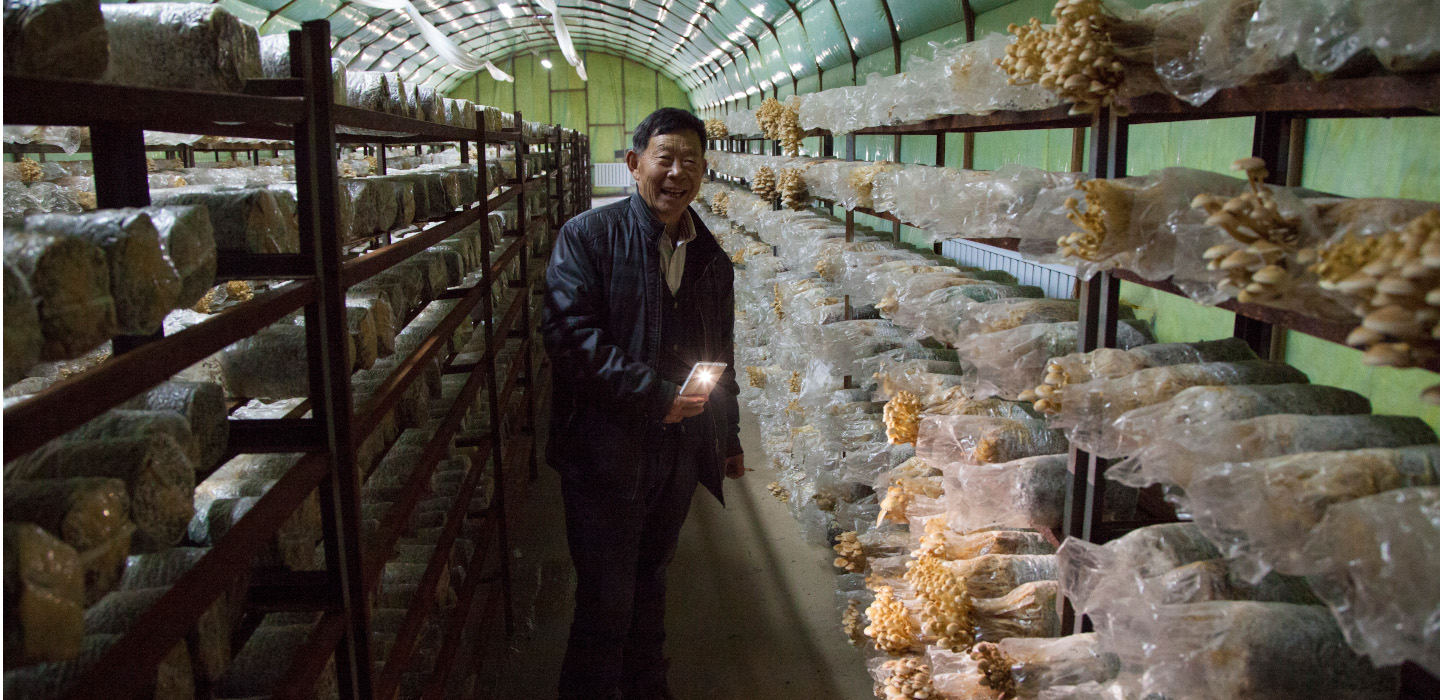The impact of COVID-19 on smallholders in China
IFAD Asset Request Portlet
Asset Publisher
The impact of COVID-19 on smallholders in China
Estimated reading time: 4 minutes
One emerging lesson from the coronavirus epidemic (in China as well as the rest of the world) is that, although everyone may be affected, those who are already vulnerable are those who are likely to be the most severely impacted. People who are already vulnerable have less capacity to cope with the consequences of an outbreak, in terms of both limited access to social services, medical care, and social protection, and limited ability to cope economically.
Why caring about the smallholders matters
In China, as in many other places, smallholder farmers are among these vulnerable groups. Smallholder farmers – farmers with less than 2-3 hectares of land – represent a significant share of the rural population: approximately 230–250 million people. In most cases, poor rural households are made up of smallholders – and in most cases, smallholders represent poor or “close-to-poor” households.
To appreciate how the coronavirus pandemic has impacted Chinese smallholders, we need to look at their main sources of livelihood. Smallholders mostly depend on the production and sale of agricultural products – although this activity represents a decreasing share of their income, currently between 10 and 20 per cent. Increasingly, they depend on informal or seasonal on- and off-farm employment, as well as the remittances from family members engaged in urban employment (which contribute to an estimated 44 per cent of their income).
All three of these income sources have been severely disrupted by the COVID-19 outbreak.
The impact of movement restrictions on employment, production and sales
Lockdown and movement restrictions have had a significant impact on employment, particularly from migrant work. Assuming, conservatively, that 75 per cent of rural migrants were confined to their villages during the country’s two-month lockdown period, a group of researchers from the Rural Education Action Program (REAP) at Stanford University has suggested that as many as 200 million rural individuals may have been out of work. If, as reported by Reuters, only 2.3 million people in China have received unemployment benefits so far, then the number of these workers who have not received a salary for at least two months is extremely high.
Similarly, lockdown and movement (and transportation) restrictions have had an impact on the production and sales of agricultural products. Movement and transportation restrictions have affected the delivery of agricultural inputs: seeds, fertilizers, animal feed. According to a survey conducted by the Chinese Academy of Agricultural Sciences (CAAS) across five provinces, the restrictions have affected spring plowing and sowing, and have significantly impacted livestock production, since livestock production cycles are so short. They have also reduced farmers’ ability to access markets, affecting the sale of fresh products, particularly livestock. They have also had an effect on agricultural supply chains. Almost 70 per cent of the cooperatives interviewed by CAAS reported that sales have been affected, and 63 per cent have reported impacts on various stages of the supply chain: purchasing materials, processing, transport, and storage.
The resulting impacts on income, food security and nutrition
Overall, the measures implemented to contain the impact of COVID-19 have significantly affected income. According to the CAAS estimates, farmers are expecting a decrease in income between 10 and 40 per cent, with 80 per cent of the farmers surveyed expecting more than a 20 per cent decrease in income. Interestingly, the observed impact on those considered non-poor (but probably close to the poverty line) was greater than that on the poor, possibly because the poor had access to some form of social protection that the non-poor were not eligible for. This makes the non-poor but close-to-poverty households even more vulnerable, and at risk of falling into poverty.
The immediate effect of the reduction in income has been a reduction in expenditures. According to a survey conducted by REAP across seven provinces, these income reductions have led directly to reduced spending on food consumption. In particular, they observed a reduction in the “quality” of the purchased food: from more nutritious but more expensive foods, to low-cost staples. The immediate implication is that, despite food being available and food prices largely remaining stable during the crisis period (even though many households reported an increase in food prices), reduced purchasing capacity because of falling income may lead to periods of food insecurity and malnutrition among vulnerable rural households.
Meanwhile, the impact of the reduction of income on savings and assets has yet to be analysed – but it is plausible to hypothesize that poor households might have sold their assets and eroded their savings to cope with the crisis, making them more vulnerable.
Key messages
First, although the measures implemented to contain COVID-19 affected everyone (the whole of China’s economy has contracted by 6.8 per cent in the first quarter, according to the National Bureau of Statistics), the impact on smallholders (particularly on those that are either poor, or above but close to the poverty line) seems higher because they are already vulnerable.
Second, with a gradual pick-up of the economy and a gradual “return to normality,” the short-term impact of COVID-19 may be contained and absorbed. In fact, what might happen is that fewer people may escape poverty than would have in the absence of the outbreak – and it may take a bit longer to eradicate extreme poverty.
However, the longer-term impact may be greater: a large share of the population may have become more vulnerable and at risk of falling (or falling back) into poverty in the event of a new shock – be it a new outbreak, an unexpected drop in commodity prices, or a poor harvest due to unfavourable weather events.
This is no surprise. The Government of China is aware that one of the main challenges in the years after 2020 will be to reduce vulnerabilities and avoid letting people fall (or fall back) into poverty.
IFAD will continue to support China’s strategic focus on rural areas and rural people as an integral part of its rural revitalization strategy. Fostering rural communities that are increasingly resilient to shocks will be one of the main areas of cooperation.
This article was originally published at China’s Poverty Reduction Online.
Publication date: 02 June 2020